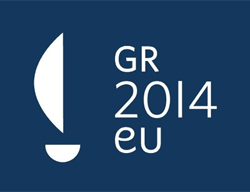THE EUROPEAN INVESTMENT BANK

The European Investment Bank (EIB) was set up in 1958 by the Treaty of Rome. Its job is to lend money for projects of European interest (such as rail and road links, airports, or environmental schemes), particularly in the less well-off regions, candidate countries and the developing world. It also provides credit for investment by small businesses.
Philippe Maystadt, from Belgium, became President of the EIB on 1 January 2000.
What does the Bank do?
The EIB is non-profit-making and gets no money from savings or current accounts. Nor does it use any funds from the EU budget. Instead, the EIB is financed through borrowing on the financial markets and by the Bank’s shareholders – the member states of the European Union. They subscribe jointly to its capital, each country’s contribution reflecting its economic weight within the Union.
This backing by the member states gives the EIB the highest possible credit rating (AAA) on the money markets, where it can therefore raise very large amounts of capital on very competitive terms. This in turn enables the Bank to invest in projects of public interest that would otherwise not get the money - or would have to borrow it more expensively.
The projects the Bank invests in are carefully selected according to the following criteria:
- they must help achieve EU objectives such as making European industries and small businesses more competitive; creating trans-European networks (transport, telecommunications and energy); boosting the information technology sector; protecting the natural and urban environments; improving health and education services;
- they must chiefly benefit the most disadvantaged regions;
- they must help attract other sources of funding.
The EIB also supports sustainable development in the Mediterranean countries, Africa, the Caribbean and the Pacific, as well as projects in Latin America and Asia.
Finally, the EIB is the majority shareholder in the European Investment Fund.
How is the Bank's work organised?
The EIB is an autonomous institution. It makes its own borrowing and lending decisions purely on the merits of each project and the opportunities offered by the financial markets. Each year, it presents a report on all its activities.
The Bank co-operates with the EU institutions. For example, its representatives may take part in committees of the European Parliament, and the President of the EIB may attend Council meetings.
The Bank’s decisions are taken by the following bodies:
- The Board of Governors consists of ministers (normally the Finance Ministers) from all the member states. It defines the Bank’s general lending policy, approves the balance sheet and annual report, authorises the Bank to fund projects outside the EU and decides on capital increases.
- The Board of Directors, approves lending and borrowing operations and it makes sure that the EIB is properly managed. It consists of 26 Directors – one nominated by each EU member state and one by the European Commission.
- The Management Committee is the Bank’s full-time executive. It handles the EIB’s day-to-day business and it has nine members.






 Svejo
Svejo Twitter
Twitter Link4e
Link4e Pipe
Pipe Web-bg
Web-bg Bghot
Bghot Lubimi
Lubimi Novinitednes
Novinitednes Ping
Ping Facebook
Facebook Myspace
Myspace Mix
Mix Del.ico.us
Del.ico.us Reddit
Reddit Digg
Digg Stumbleupon
Stumbleupon Myweb Yahoo
Myweb Yahoo Google Bookmarks
Google Bookmarks Google Buzz
Google Buzz

